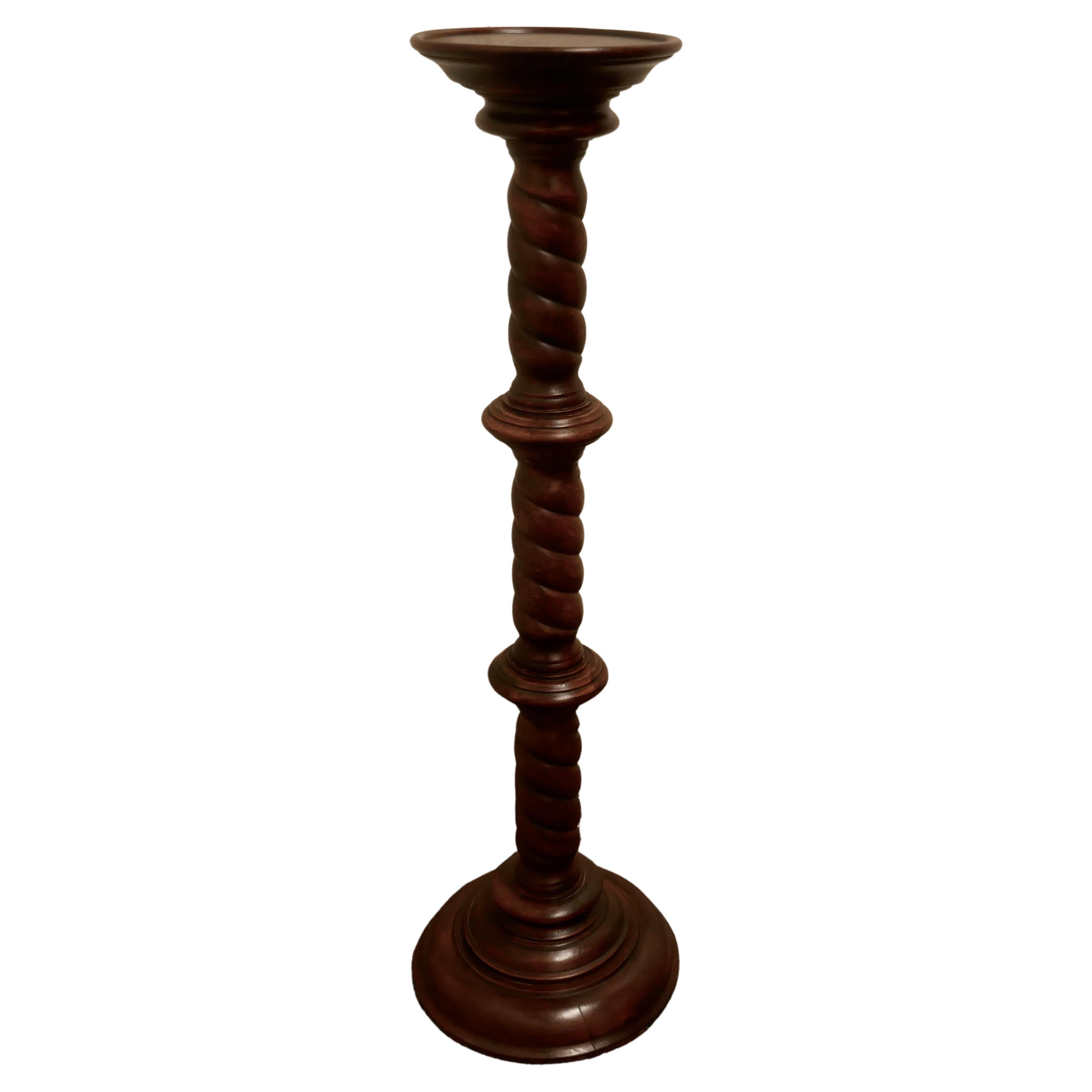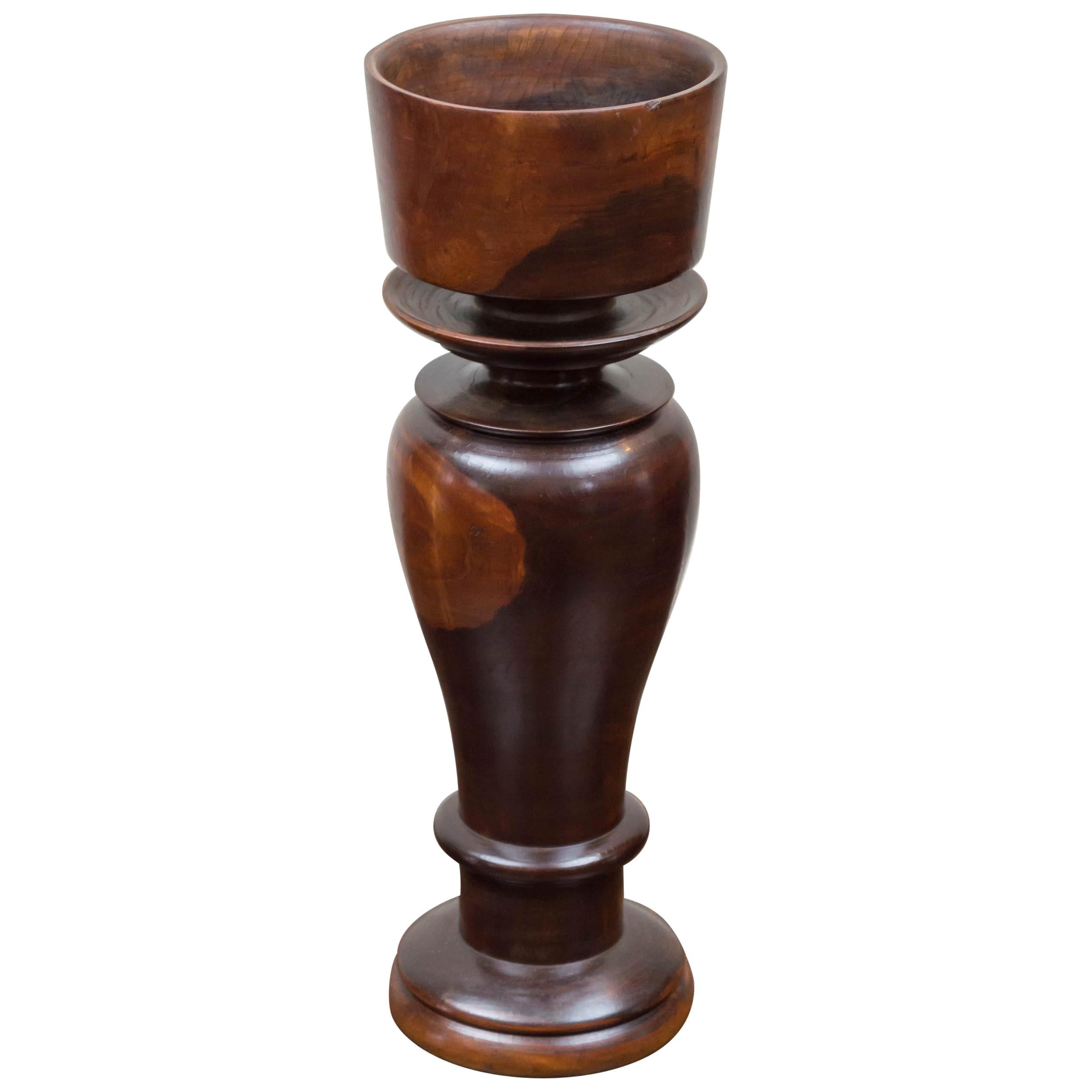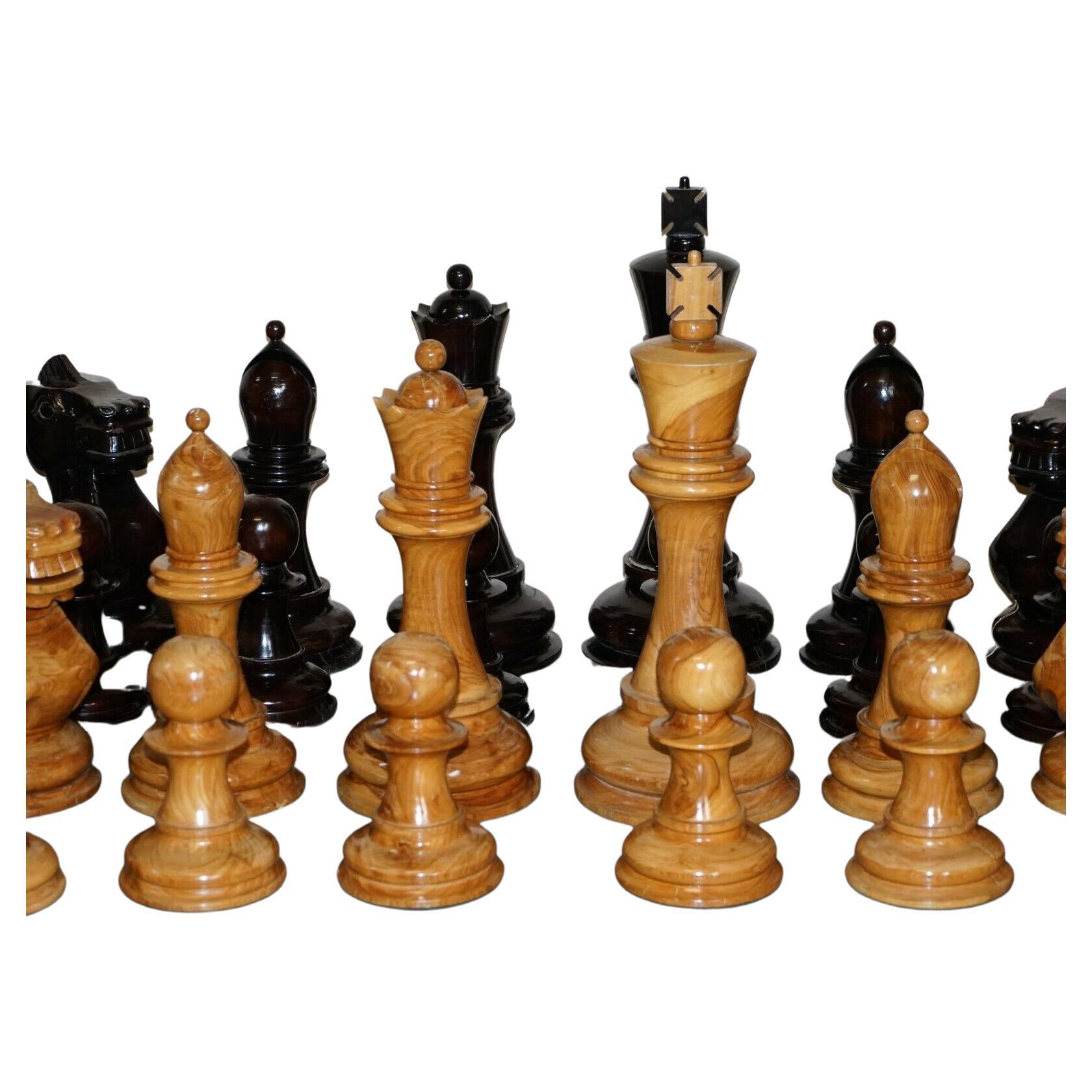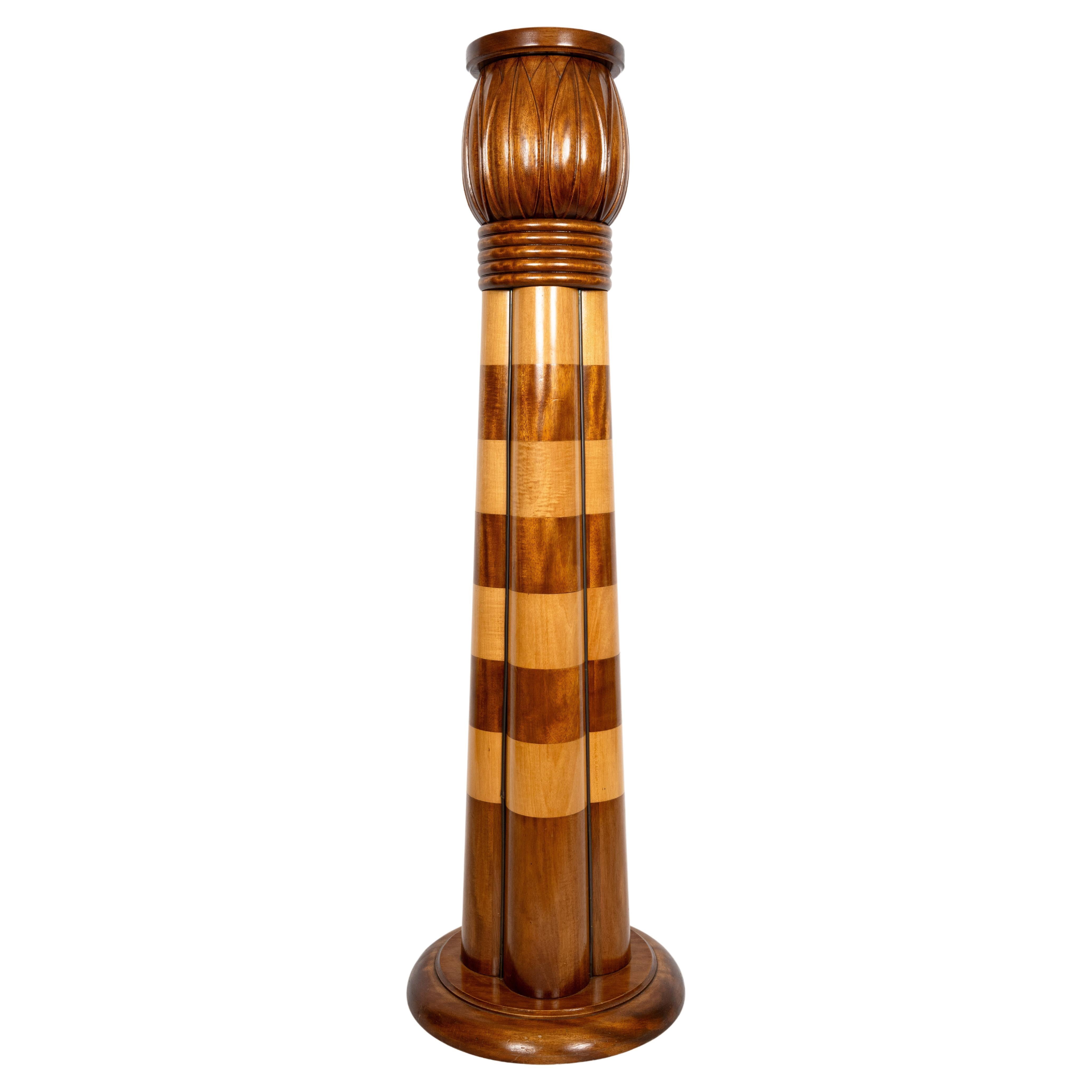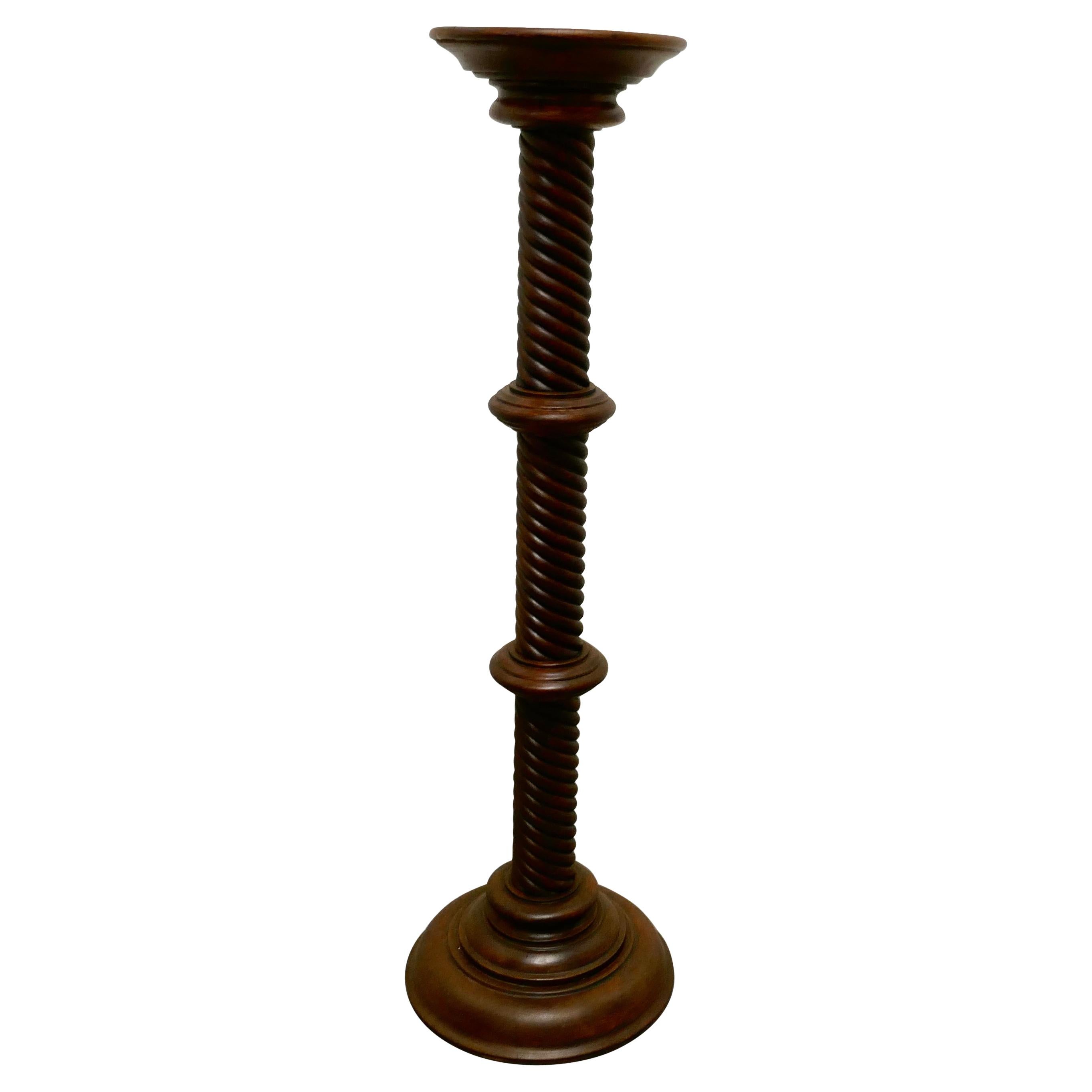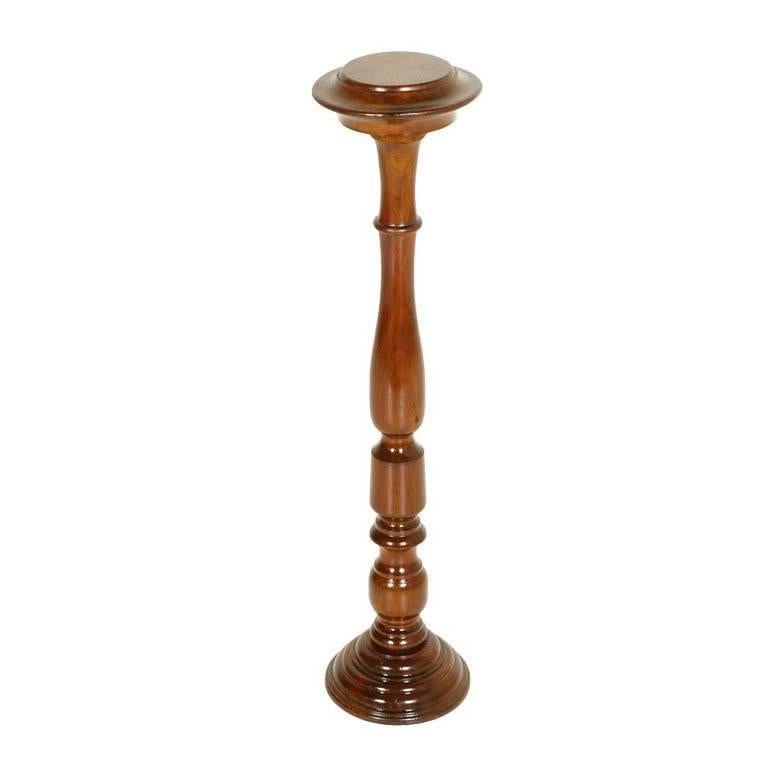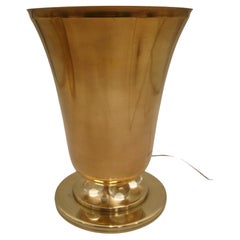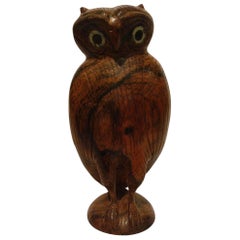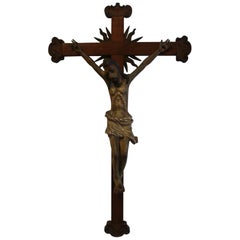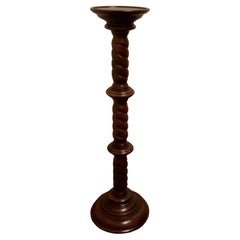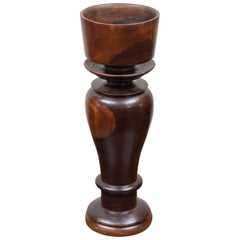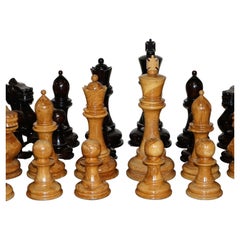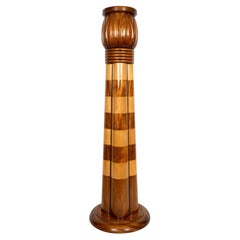Items Similar to Giant Bishop Chess Piece Wooden Sculpture With Secret compartiment
Want more images or videos?
Request additional images or videos from the seller
1 of 9
Giant Bishop Chess Piece Wooden Sculpture With Secret compartiment
$1,799
£1,343.57
€1,559.01
CA$2,491.63
A$2,793.09
CHF 1,456.54
MX$34,236.52
NOK 18,456.75
SEK 17,547.41
DKK 11,632.26
Shipping
Retrieving quote...The 1stDibs Promise:
Authenticity Guarantee,
Money-Back Guarantee,
24-Hour Cancellation
About the Item
Very nice giant Bishop chess piece. Made of several woods following a pattern. The top comes off, and it has something like an urn, maybe a secret hidden place.
Chess is a two-player strategy board game played on a chessboard, a checkered gameboard with 64 squares arranged in an eight-by-eight grid. Chess is played by millions of people worldwide, both amateurs and professionals.
Each player begins the game with 16 pieces: One King, one Queen, two rooks, two knights, two bishops, and eight pawns. Each of the six piece types moves differently. The most powerful piece is the queen and the least powerful piece is the pawn. The objective is to 'checkmate' the opponent's king by placing it under an inescapable threat of capture. To this end, a player's pieces are used to attack and capture the opponent's pieces, while supporting their own. In addition to checkmate, the game can be won by voluntary resignation by the opponent, which typically occurs when too much material is lost, or if checkmate appears unavoidable. A game may also result in a draw in several ways.
We have specialized in the sale of Art Deco and Art Nouveau and Vintage styles since 1995. If you have any questions we are at your disposal. Pushing the button that reads 'View All From Seller'. And you can see more objects to the style for sale. Why are there so many antiques in Argentina?
In the 1880 – 1940 there was a grate wave of immigration encouraged by the periods of war that were taking place. 1st World War took place between 1914 and 1918 2nd World War took place between 1939 and 1945 The immigrants options were New York or Buenos Aires. Tickets were cheap and in Buenos Aires they were welcomed with open arms, as it was a country where everything was still to be done. Argentina was the country of new opportunities, labour was needed and religious freedom was assured, in many cases the of the family travel first until they were settled and then the rest of the family members join them. In the immigrant museum “Ellis Island Immigrant Building” in New York you can se the promotional posters of the boats that would take them to a new life. Between the years 1895 and 1896, Argentina had the highest DGP (gross domestic product) per capita in the world according to the Maddison Historical Statistics index, this situation arose due to the large amount of food being exported to European countries, which were at war. The Argentinean ships left the port of Buenos Aires with food, but they returned with furniture, clothes and construction elements, (it´s common to see this the old buildings of the historic neighbourhood of San Telmo, the beams with the inscription “Made in England)”, as well as many markets that were built in Buenos Aires, such us the San Telmo Market, whose structure was brought by ship and afterwards assembled in 900 Defensa Street. With the great influence of European immigrants living in the country, the children of the upper classes travelled to study in France, resulting in the inauguration of “La Maison Argentinienne”, on 27th of June 1928, in the international city of Paris, which hosted many Argentinians that were studying in Frace. It´s the fourth house to be built after France, Canada and Belgium, being the first Spanish-speaking one. Still in place today (17 Bd Jourdan, 75014, Paris, France). Many of the children of these wealthy families who attended international art exhibitions, museums and art courses abroad, took a keen interest in the European style. This is why Buenos Aires was at the time referred as “The Paris of South America”. Between the years 1890 and 1920 more than a hundred Palaces were built on Alvear Avenue the most exclusive avenue in Buenos Aires. Today some of these palaces have been transformed into museums, hotels and embassies. In the year 1936, the Kavanagh building was inaugurated, it was the tallest reinforced concrete building in South America. During 1994 the American Society of Civil Engineers distinguished it as an “international engineering milestone”, and it´s now considered a World Heritage of Modern Architecture. At the time was common to hire foreign architects such as Le Corbusier, who visited Buenos Aires/Argentina in 1929 and in 1948 he drew up the blueprints for a house built in La Plata City (which was declared a World Heritage Site). In 1947, the Hungarian architect Marcelo Breuer designed “Parador Ariston” in the seaside city of Mar del Plata. After an Argentinean student at Harvard University convinced him to come to Argentina. He worked on an urban development project in the Casa Amarilla, area of La Boca. The Ukrainian architect, Vladimiro Acosta, arrives in Argentina in 1928 and worked as an architect until que moved to Brazil. Antonio Bonet, a Spanish architect who worked with Le Corbusier in Paris, arrives in Argentina in 1937, where he carried out several architectural works and in 1938 designs the well-known BFK chair. Andres Kálnay, of Hungarian origin, made around 120 architectural masterpieces, among which the former Munich brewery stands out, he even made the furniture’s design. The German architect, Walter Gropius, director of the Bauhaus, lived in Argentina, where he wrote articles for “Sur” magazine and founded in Buenos Aires, an architectural firm with Franz Möller, who was also an architect, where he built two houses. At the same time several famous designers decided to immigrate to Argentina, among them we can find the well-known French designer, Jean-Michel Frank, who arrived in the country in 1940 and also worked for the Rockefeller family. Special pieces were made, which were sold exclusively in the country, such as the well-known German company “WMF”, who sold their products by catalogue, which were chosen by the ladies of high society in the list of wedding gifts, as well as the pieces designed by Christofle. The Swiss sculptor Alberto Giacometti, made special pieces for Argentinean mansions. In 1904 the first Jansen branch outside Paris was established in Buenos Aires, as the Argentinean clientele demanded a large amount of furniture, from the end of the 19th century to the mid-20th century. In 1970, the brand Rigolleau Argentina made pieces authorised by Lalique. The brands Maple and Thompson also set up shop in the country. The French plastic artist, Marcel Duchamp moved to Argentina in 1918-1919. Glass signed Gallé, Charder, Leverre, Schneider, Muller and other French firms. They were bought in flower shops and were given to ladies with beautiful floral arrangements. Some furniture manufacturers travelled to international fairs and bough the patterns to produce the furniture in Argentina, such as the furniture firm Englander and Bonta, who bought the patterns in Italy. It is worth mentioning that in Argentina we have the largest community of Italians outside of Italy, as it is estimated that 70 percent of the inhabitants have at least one Italian descendant, followed by Spanish immigrants. The most Important furniture stores in Argentina: Comte is founded in 1934 (under the direct management of Jean Michel Frank in 1940). Nordiska (Swedish company established in 1934). Churba in 1960, a company that brought foreign designers to present their furniture in the country: Denmark: (Arne Jacobsen, Finn Juhl, Bender Madsen, Ejner Larsen, Poul Kjaerholm, Hans Wegner) Sweden: (Hans Agne Jakobsson, Gustavsberg) United States: (Herman Miller) Finland: (Lisa Johansson, Folke Arstrom, Tapio Wirkkala, Alvar Aalto, Timo Sarpaneva) Swedish Factory: (Orrefors) Italy: (Littala, Vico Magistretti, Emma Gismondi, Gae Aulenti, Angelo Mangiarotti, Elio Martinelli, Gianna Celada, Angelo Mangiarotti, Mario Bellini, Carlo Scarpa) Finland: (Olivia Toikka) Plata Lappas (Lappas Silver): a goldsmith shop founded in 1887 in Argentina by Alcibiades Lappas of Greek origin. In 2019, in Argentina took place “the Art Deco world congress” . Argentina currently has more than 100 Art Deco buildings and another 90 Art Nouveau buildings throughout the city of Buenos Aires. Argentina is a country that has not been involved in many wars, which is why it has been a refuge for works of art and antiques from different periods of time, unlike European countries. That is way many collectors, museums and antique dealers from all over the world visit it, you should not miss the opportunity to visit this great country.
- Dimensions:Height: 19.3 in (49 cm)Diameter: 6.11 in (15.5 cm)
- Style:American Classical (In the Style Of)
- Materials and Techniques:
- Place of Origin:
- Period:1910-1919
- Date of Manufacture:1910-1915
- Condition:Refinished. Wear consistent with age and use. Very good Conditions, just re-polished.
- Seller Location:Buenos Aires, AR
- Reference Number:1stDibs: LU202736049373
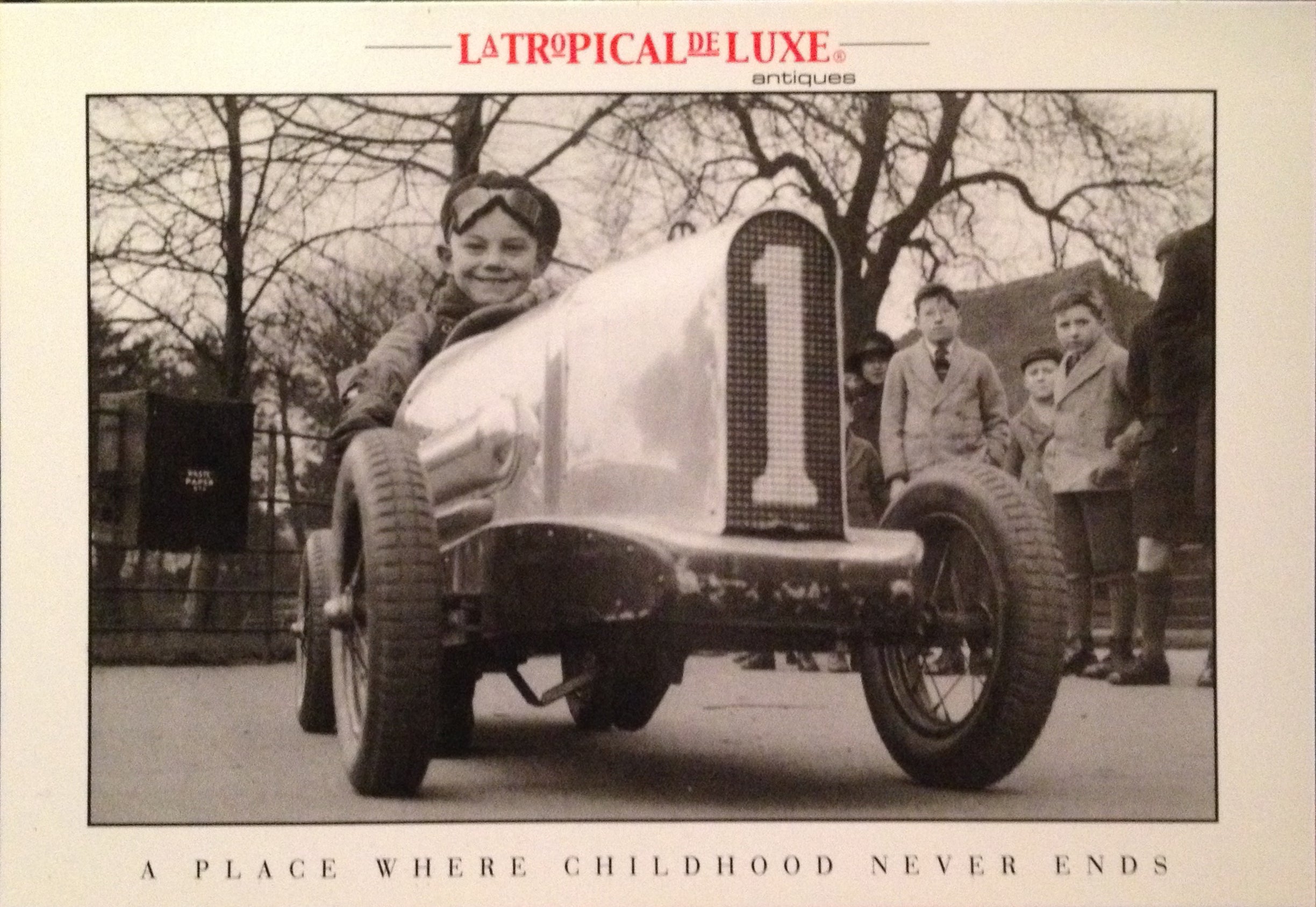
About the Seller
4.9
Vetted Professional Seller
Every seller passes strict standards for authenticity and reliability
Established in 2002
1stDibs seller since 2016
319 sales on 1stDibs
Typical response time: 1 hour
- ShippingRetrieving quote...Shipping from: Buenos Aires, Argentina
- Return Policy
Authenticity Guarantee
In the unlikely event there’s an issue with an item’s authenticity, contact us within 1 year for a full refund. DetailsMoney-Back Guarantee
If your item is not as described, is damaged in transit, or does not arrive, contact us within 7 days for a full refund. Details24-Hour Cancellation
You have a 24-hour grace period in which to reconsider your purchase, with no questions asked.Vetted Professional Sellers
Our world-class sellers must adhere to strict standards for service and quality, maintaining the integrity of our listings.Price-Match Guarantee
If you find that a seller listed the same item for a lower price elsewhere, we’ll match it.Trusted Global Delivery
Our best-in-class carrier network provides specialized shipping options worldwide, including custom delivery.More From This Seller
View AllThomas Messenger and Sons 'Atlas' Sculpture Bronze Lamp Base, England circa 1835
By Thomas Messenger
Located in Buenos Aires, Olivos
Thomas Messenger and Sons 'Atlas' Sculpture Silvered Bronze Lamp Base, England circa 1835.
English William IV period, bronze table lamp by the Birmin...
Category
Antique 19th Century English Regency Figurative Sculptures
Materials
Bronze
Art Deco Uplight Brass Metal Table Lamp, French, 1930s
Located in Buenos Aires, Olivos
A lovely example of Art Deco that shows great style and imagination is this French table lamp trumpet shape. Cream coloured on the inside and takes a normal bulb, you can use energy ...
Category
Mid-20th Century French Art Deco Table Lamps
Materials
Brass
Folk Art Standing Owl Wooden Carved Sculpture
Located in Buenos Aires, Olivos
Lovely Folk Art wooden carved standing owlSculpture.
It has bone around the eyes. Small chip on the base.
We have specialized in the sale of Art Deco and Art Nouveau and Vintage st...
Category
Early 20th Century American American Colonial Animal Sculptures
Materials
Bone, Wood
18th Century Carved Wooden Representing Christ on the Cross Folk Art
Located in Buenos Aires, Olivos
Latin American 1700s wooden crucifix. Carved face and body features. Beautiful patina. Jesus on the Cross Folk Art.
We have specialized in the sale of Art Deco and Art Nouveau and V...
Category
Antique Mid-18th Century Paraguayan Folk Art Wall-mounted Sculptures
Materials
Wood
Renato Bertelli Sculpture / Desk Paperweight, 1930´s
By Renato Giuseppe Bertelli 1
Located in Buenos Aires, Olivos
Very rare Modernist Wooden Sculpture / Desk Paperweight.
Designed in 1930´s by Renato Bertelli
Futurist Benito Mussolini shadow Sculpture. The I is made of silver and marked R. G. B....
Category
Mid-20th Century Italian Mid-Century Modern Abstract Sculptures
Materials
Silver
$2,800 Sale Price
20% Off
Bronze Hand Inkstand / Inkwell Desk Piece
Located in Buenos Aires, Olivos
A bronze sculpture of a hand with an open palm. Resting on the palm is a bronze object that resembles a traditional spinning top. The hand appears to be life-sized (Small Children s...
Category
Antique Late 19th Century English Victorian Inkwells
Materials
Bronze
$1,440 Sale Price
20% Off
You May Also Like
19th Century Carved Mahogany Pedestal Torchere
Located in Godshill, Isle of Wight
19th century carved mahogany pedestal torchere
The column has a barley twist turning, both top and bottom are round, the top has a small lip and t...
Category
Antique Late 19th Century Victorian Obelisks
Materials
Mahogany
Anglo-Indian, Massive Baluster Turned Lignum Vitae Pot Pourri Stand
Located in San Francisco, CA
Late 19th Century Anglo Indian, massive baluster turned, lignum-vitae pot pourri stand. Circa 1880.
Lignum-vitae ( iron wood ) is massively dense and the hardest wood known. It has a...
Category
Antique 1880s Indian Anglo-Indian Planters, Cachepots and Jardinières
Materials
Hardwood
Giant Hand Carved Wood Chess Set Tallest Piece Beautiful Timber Patina
Located in West Sussex, Pulborough
We are delighted to offer for sale this extremely well crafted Giant Chess Set in hand carved hardwood
A truly stunning and exquisitely made set, the whi...
Category
20th Century European Country Games
Materials
Hardwood
$3,900 Sale Price
20% Off
A Cluster Column Form Pedestal
Located in New York, NY
A cluster column form pedestal. The tapered base supported by a round plinth and having a stylized lotus flower carved element at the top. The base in contrasting light and medium co...
Category
Antique Early 1900s Pedestals
Materials
Walnut
19th Century Carved Mahogany Pedestal Torchere
Located in Godshill, Isle of Wight
19th century carved mahogany pedestal torchere
The column has a tight barley twist turning, both top and bottom are round, the top has a small lip...
Category
Antique Mid-19th Century Victorian Obelisks
Materials
Mahogany
Mid-Century Modern Pedestal Column in Walnut Turned Polished to Wax
Located in Vigonza, Padua
Mid-Century Modern pedestal column in walnut turned polished to wax
Measures cm: H 71, diam 17.
Category
Vintage 1940s Italian Neoclassical Revival Pedestals
Materials
Walnut
